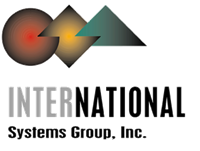- Home
- /
- Clients
- /
- Case Studies
- /
- USPTO RAM Case Study
Next steps:
Events:
Conference 2014
The Connected Enterprise – Cloud, Mobile, and the Internet of Things
Rome, Italy, December 2-3, 2014
Scheduled seminars
The New Integration Manifesto: Applications, Data, Cloud, Mobile, and the Internet of Things
October 27-28, 2014
Application Development in the Age of Cloud and Mobile
December 11-12, 2014
Case Study: Multi-layered Architecture with Rich Internet Application (RIA), REST, and SOAP-based SOA

The United States Patent & Trademark Office (USPTO) is a federal agency that processes several hundred thousand patent and trademark applications per year.
A number of automated information systems are used to manage the financial management process, including planning, requests, payments, cost accounting and reporting. The central system was the Revenue Accounting Management System (RAM). It had over 70 interfaces to internal and external systems, and was the key fee collection system for all USPTO products and services. RAM was implemented in 1997 to support the internal workforce and business operation during typical business hours. Over time, RAM was extended to accommodate a 24x7 global Internet community with little update to the initial design. This extended functionality introduced scalability, performance, and stability problems, which constrained the ability to keep up with evolving business needs.
The USPTO decided to replace it with a new system, with broader functionality, yet a significantly simpler internal structure. A “rip and replace” approach was clearly too risky and too expensive. Therefore an approach was chosen that would allow migrating the system gradually into the new, mandated enterprise SOA. Key elements of this approach were a multi-layered design that included RESTful services as well as SOAP-based services, and a Rich Internet Application (RIA) that provided the user facing capabilities.
Some of the key architectural guidelines included:
- Every durable data construct should belong to only one “database of record”. The business unit that owns the data is responsible for providing any services necessary to make the data available.
- Each service must adhere to the USPTO security model.
- All services within USPTO should be available from a single logical entity. A services gateway should be provided by an Enterprise Service Bus (ESB).





